Scope
CTIQ lists important wood properties to be considered when selecting a timber for a construction application in Queensland. It also provides requirements and conditions of use for these timbers that will provide appropriate design service life in various construction applications for Class 1 and Class 10 buildings in Queensland.
The correct specification of timber usually requires a range of timber properties to be considered. These include, but are not limited to, stress grade, durability class, moisture content and insect resistance. For the specification of timber sizes and spans, relevant Australian Standards and design manuals should be consulted—e.g. Australian Standard AS 1684 series Residential timber—framed construction parts 2 and 3 (Standards Australia 2006).
The Guides and A-Z index
These explain the terms used, with reference to nomenclature, origin and properties of the timbers in Schedules A, B and C. They also explain target design life, applications and decay hazard zones. They include:
- A-Z index of the definitions of abbreviations, codes and symbols and descriptions relating to timber species, origin and properties and specified conditions for using of timbers listed in Schedules A, B and C.
- Guides to the properties of timbers listed in Schedules A, B and C. The Guides are:
- Wood density and hardness
- Strength groups and stress grades
- Joint groups
- Natural durability ratings
- Lyctine susceptibility
- Termite resistance
- Bushfire-resisting timbers
- Guides to the conditions specified for using the timbers listed in Schedules A, B and C in Queensland. They include:
- Building components, applications and environment
- Target design life
- Decay hazard zones
- Conditional use codes
- Treatment (hazard) codes
- Advisory codes
- Additional advisory information
The timbers, properties and conditions for use
The timbers are listed in Schedules A, B and C:
Schedule A contains commercial mixtures of unidentified timbers (the most usual market presentation of various Australian open forest and rainforest hardwoods) and of some Australian and imported softwoods.
Schedule B contains Australian-grown timber species, including both natural forests and plantations.
Schedule C contains timbers imported into Australia from overseas.
Each Schedule lists:
- construction timbers in alphabetical order by standard trade name
- botanical name/s
- region of origin
- timber properties (strength group, joint group, natural durability, lyctine susceptibility, termite resistance, and bushfire-resisting status)
- target design life (i.e. 5-year, 15-year and 50-year categories)
- approved construction uses for each species or species group
- decay hazard zones for above-ground and in-ground applications
- codes representing approval, conditions for use (C1 to C17 and H1 to H5) or non-approval
- advisory codes (A1 to A9), where applicable.
A tick symbol* under an application indicates that the corresponding timber species or species group is approved for applications within that category. For some uses, a timber may be used only if it meets a certain minimum condition or provision indicated by a restrictive C or H code. When a timber species or species group is not allowed for a particular application a cross (X) is used to denote prohibition.
The advisory codes A1 to A9 highlight specific characteristics that may affect performance, but are informative only and not normative (mandatory) requirements. Additional advisory information is given in the Guide to advisory information.
The recommendations made in this publication assume that good building practice will be carried out.
*Some symbols are represented differently in the digital version: QTimber: see the guide A to Z
